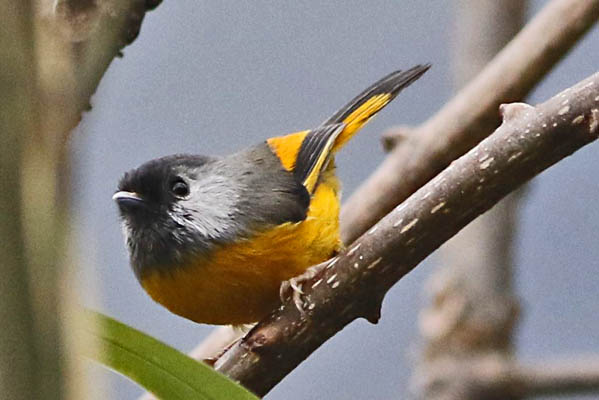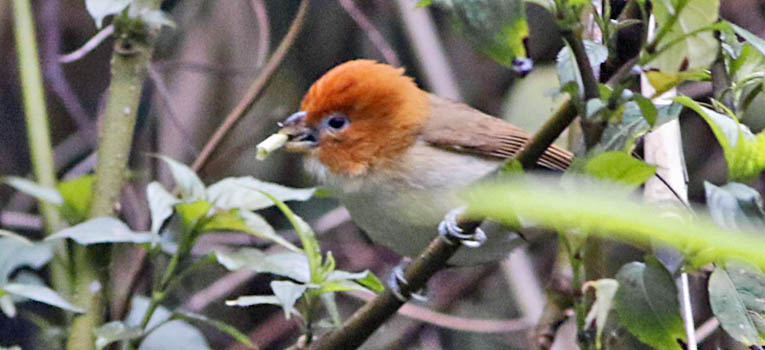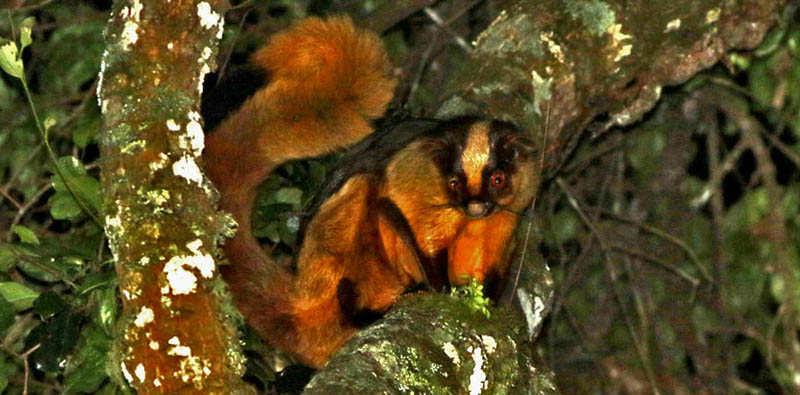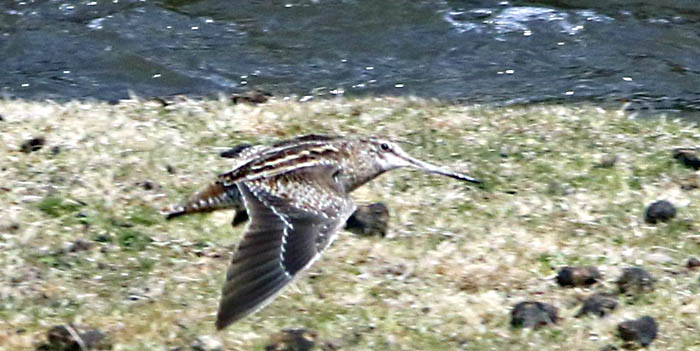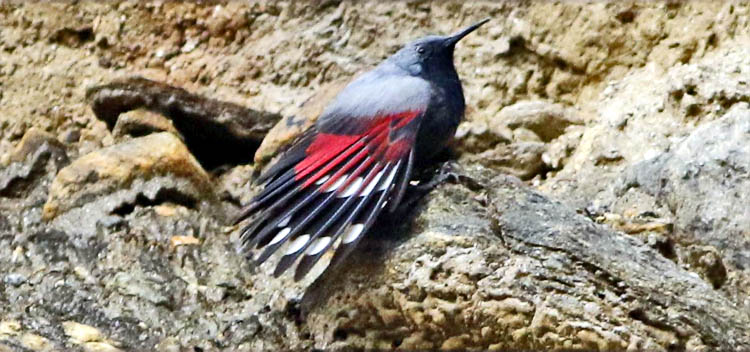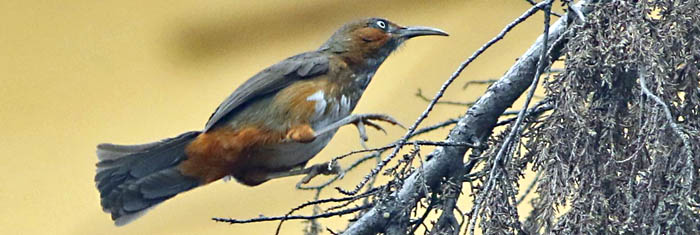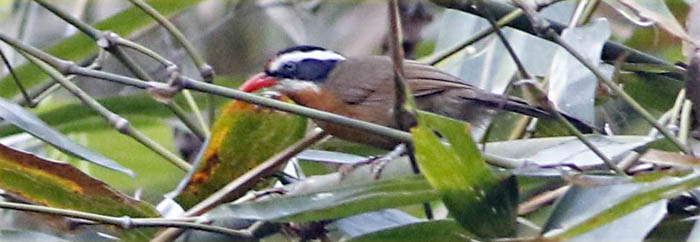| |
|
|
| |
report & photos by Don Roberson |
|
| |
This
gallery of bird and mammal photos is a selection of favorite photos in
specified categories from the Bhutan in March-April 2019. The title
photo (above) shows Jomolhari (or Chomolhari), the second highest peak
in Bhutan at 7326m (24,035' elev). It is on the Bhutan-Tibet border. No
mountain climbing is now permitted in Bhutan above 6000m, as peaks
higher than that are considered sacred. Apparently Jomolhari has only
been climbed 6 times: two from the Bhutan side before 1970, an 4 since
1970 from the Tibetan side. |
|
| |
|
|
| |
Blue bird with blue sky —
We could do this with Mountain Bluebird or the Blue Bird-of-Paradise, but here we use
Verditer
Flycatcher
|
|
|
|
| |
|
|
| |
|
Fulvetta!
What's in a name? It used to be a set of babblers in a specified genus
but now, after molecular research, it's the English name of a set of
unrelated small birds scattered across four different bird families!
The one featured here is a bamboo specialist in the Paradoxornithidae, the Golden-breasted Fulvetta Lioparus chrysotis. It is a constantly moving little bird, usually in flocks, that I'd previously seen in a Panda reserve in China.
Asian birds with the English name "fulvetta" are now in the Sylviidae (what remains of genus Fulvetta), the Pellorneidae (genus Schoeniparus), in the Paradoxornithidae (several genera), and those Fulvettas in genus Alcippe have recently been proposed to be elevated to their own Family. For more details see my family pages on the Paradoxornithidae and on the Alcippeidae.
|
|
|
| |
|
|
| |
| Speaking of parrotbills, we had an fine collection on this trip. This is the rather unexpected White-breasted Parrotbill Paradoxornis ruficeps, as were the tiny Black-throated P. nipalensis and the mid-sized Gray-headed P. gularis parrotbills. The small Pale-billed P. atrosuperciliaris was very local in bamboo at Royal Manus NP, but Brown P. unicolor was expected at some sites. We watched members of this flock of White-breasted actively eating bamboo shoots. |
|
|
|
| |
|
|
| |
|
A major highlight at night in the forest along the lower Lingmethang Road was Hodgson's Giant Flying-Squirrel Petaurista magnificus.
This stunningly beautiful flying-squirrel resides in the canopy. We did
not see one "fly" but we did watch an amorous pair engaged in, well,
you know . . .
|
|
|
| |
|
|
| |
There
is something about birds with long decurved bills. Curlews, hemits,
thrashers, earthcreepers, scythebills, and scimitarbills all feature
this character. Yet there is something about those Asian
scimitar-babblers in what is left of family Timaliidae that is special
— perhaps it is because they are colorful but very hard to see due to
their skulking behavior. Here are two of my favorites among the four
species of Pomatorhinus seen on this trip:
Rusty-cheeked Scimitar-Babbler P. erythrogenys
(top right) is large for the genus, and occurs in gardens, hill scrub,
and forest edge. It is much easier to hear than see this rather common
species.
In contrast, Coral-billed Scimitar-Babbler P. ferruginosus (bottom right) has a limited range in foothill bamboo and thickets. We saw it only twice, each time with a mixed flock.
|
|
|
|
| |
|
|
| |
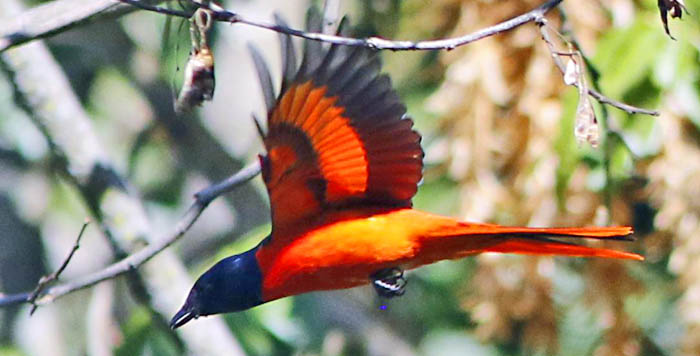 |
Minivets! Who doesn't love minivets? They are small cuckooshrikes in genus Pericrocotus,
and what's not to like? In Bhutan the various species flit through the
canopy in flocks of red-and-black males and yellow-and-black females.
Identifying a minivet to species can be difficult except at close range
but they generally separate out by elevation. The widespread and common
Scarlet Minivet P. speciosus is found in
wooded lowlands and foothills. I like flight photos of birds — and was
happy with this purely fortuitous shot of a male from Royal Manaus
National Park. |
|
|
| |
|
|
| |
| Another flight shot features is a quite rare bird in Bhutan: Solitary Snipe Gallinago solitaria.
This easily-overlooked, large but solitary species, winters in alpine
bogs and streams. I'd seen it once before at 13,000' elev (4000m) in
Ladakh, India. David Erterius knew a stream where one had been seen in
a previous year — in the Ura Valley of Bhutan (3025m) — and after lunch
we walked to the prior year's exact location and up flushed the snipe!
We were able to relocate it along the cold-water stream and get scope
views, before it headed back to its original spot (and I got some
flight shots). |
|
|
|
| |
|
|
| |
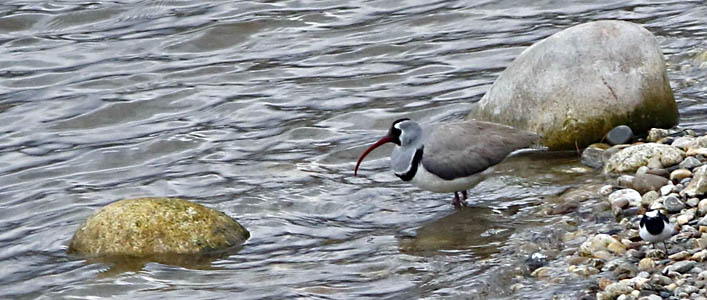 |
Ibisbill Ibidorhyncha struthersii,
the unique wader in the Himalayas that is placed in its own monotypic
family, would easily have been one of the top ten highlights of the
trip except (a) we had close views of several Ibisbills just the week
before in Assam, India, and (b) I'd already photographed one in
northwest India 18 years before. Still, the exquisite shorebird is
spectacular when found on a rushing river, as here, at Jakar. And it is
found amongst my list of the 50 Best Birds on Earth. |
|
|
| |
|
|
| |
| Wallcreeper Tichodroma muraria
is also usually placed in its own bird Family, and is another unique
and unforgettable species. We saw 3 on this trip, presumably all of
them migrants heading towards alpine cliffs for summer breeding. This
one has the black throat of full breeding plumage and was engaging in
wing-flicking behavior that showed off the hidden colors and patterns
in its primaries. |
|
|
|
| |
|
|
| |
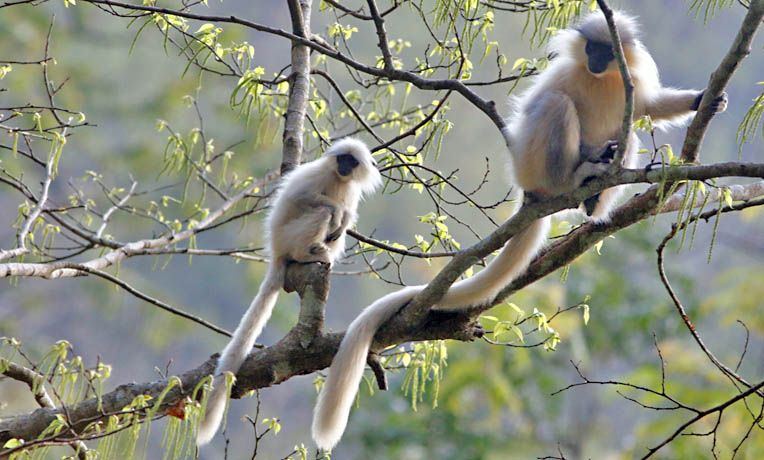 |
I
took thousands of photos on this trip, and documented well over 100
species of birds, not to mention mammals, scenery, dzongs and people.
For now I wrap up this page with a nice portrait of mother and young Golden Langur Tracypithecus geei, taken in subtropical forest within Royal Manaus NP. |
|
|
| |
|
|
| |
|
|
| |
|
page created 27-28 Apr 2019 |
|
© Don Roberson |
|
|


